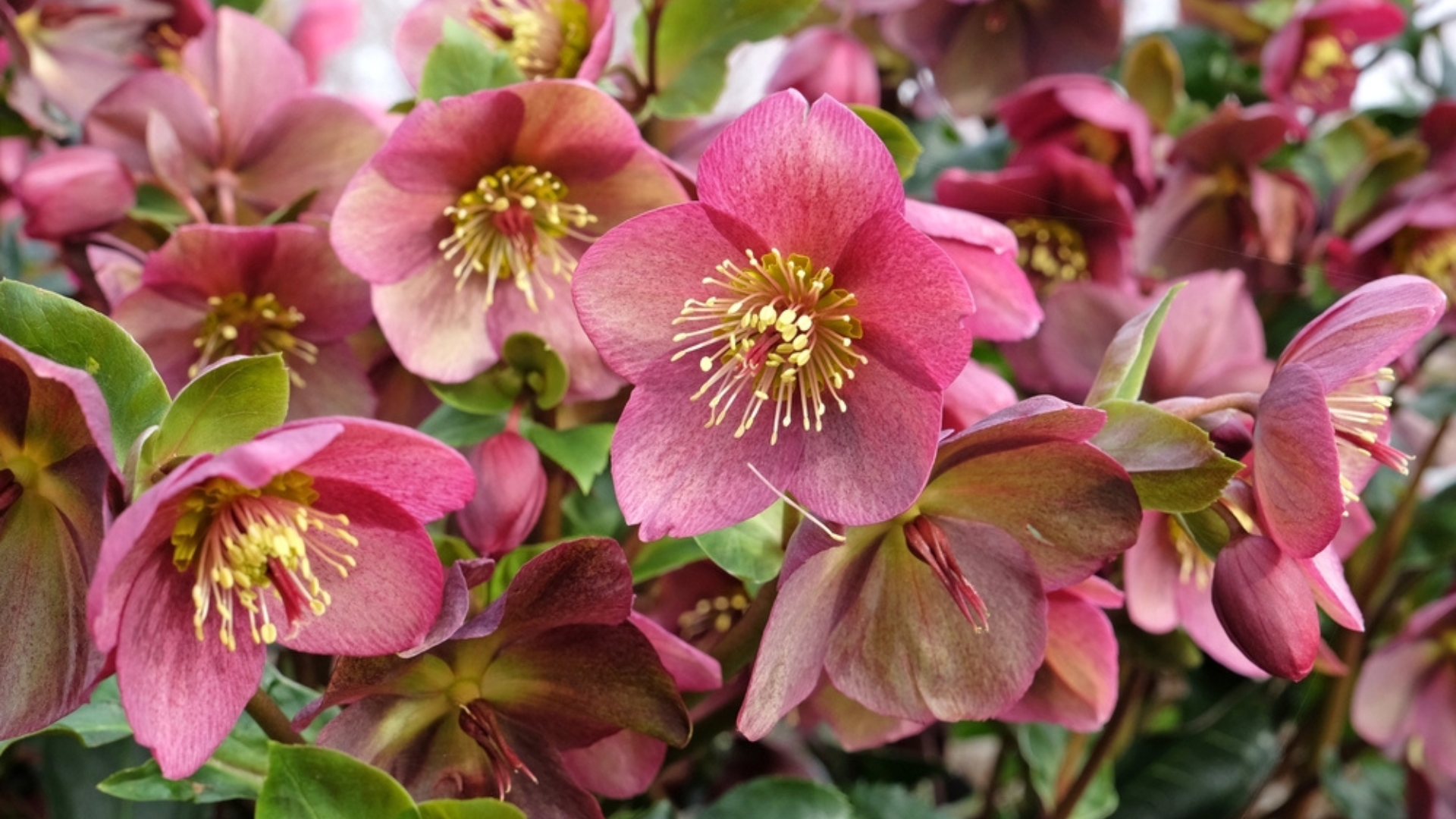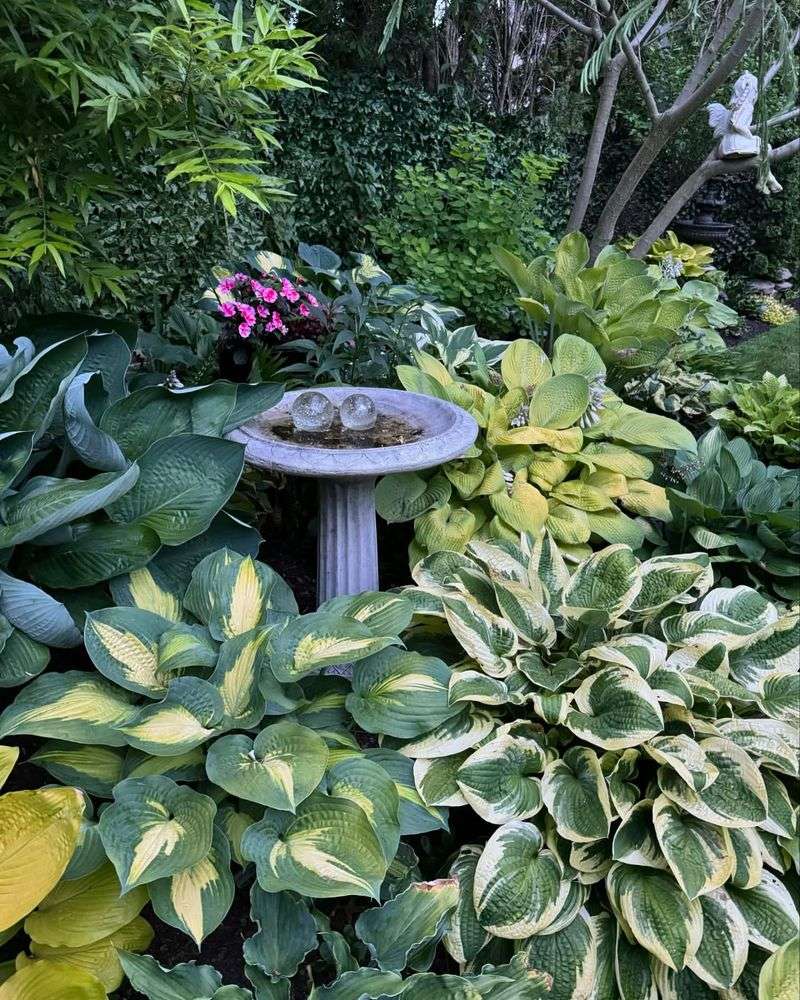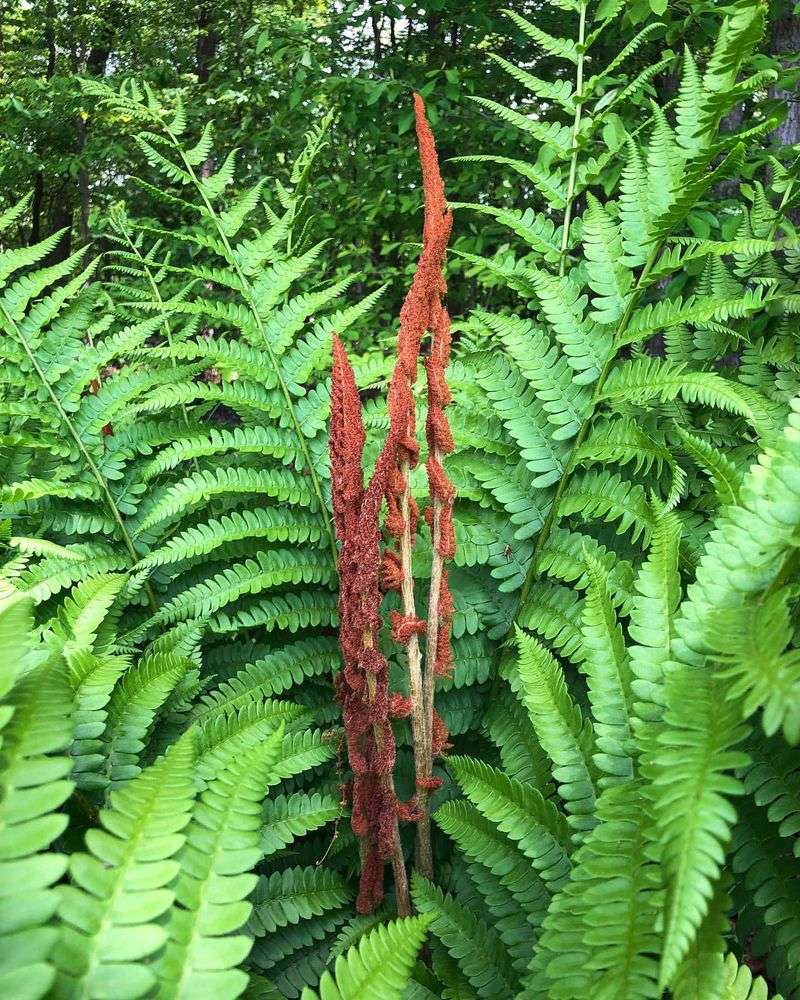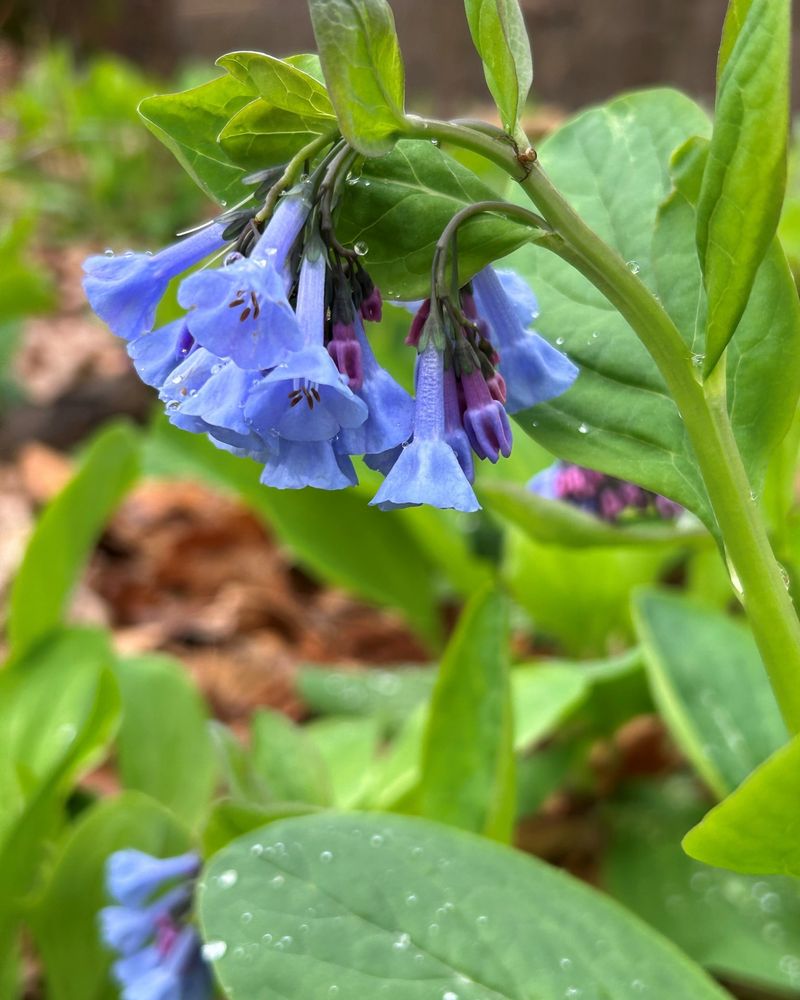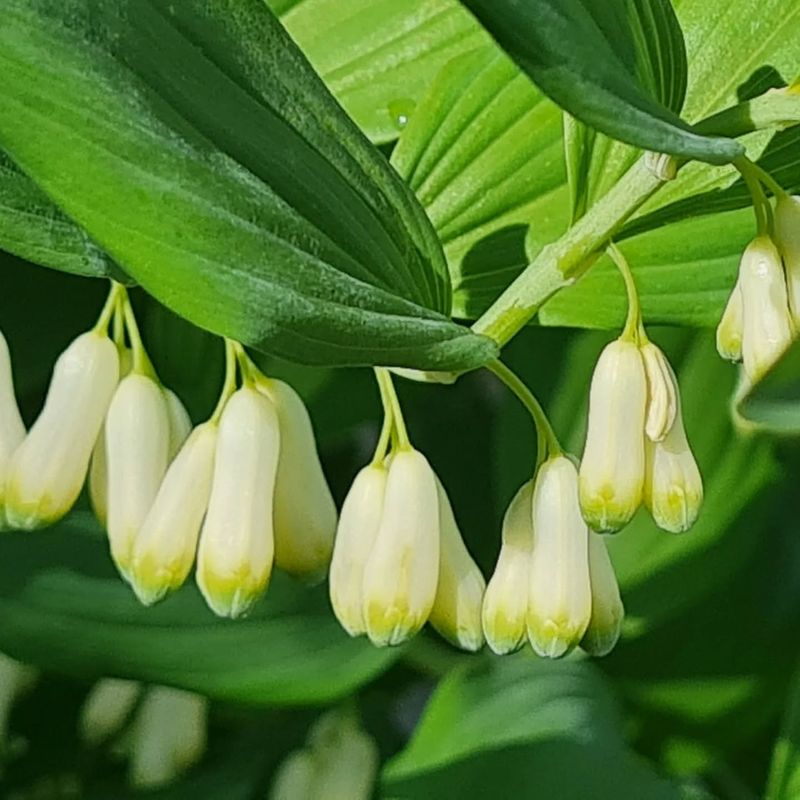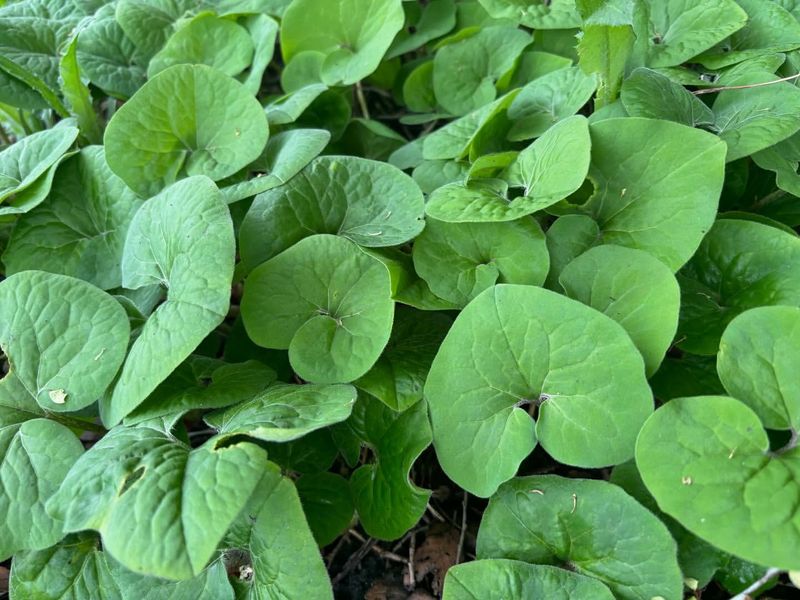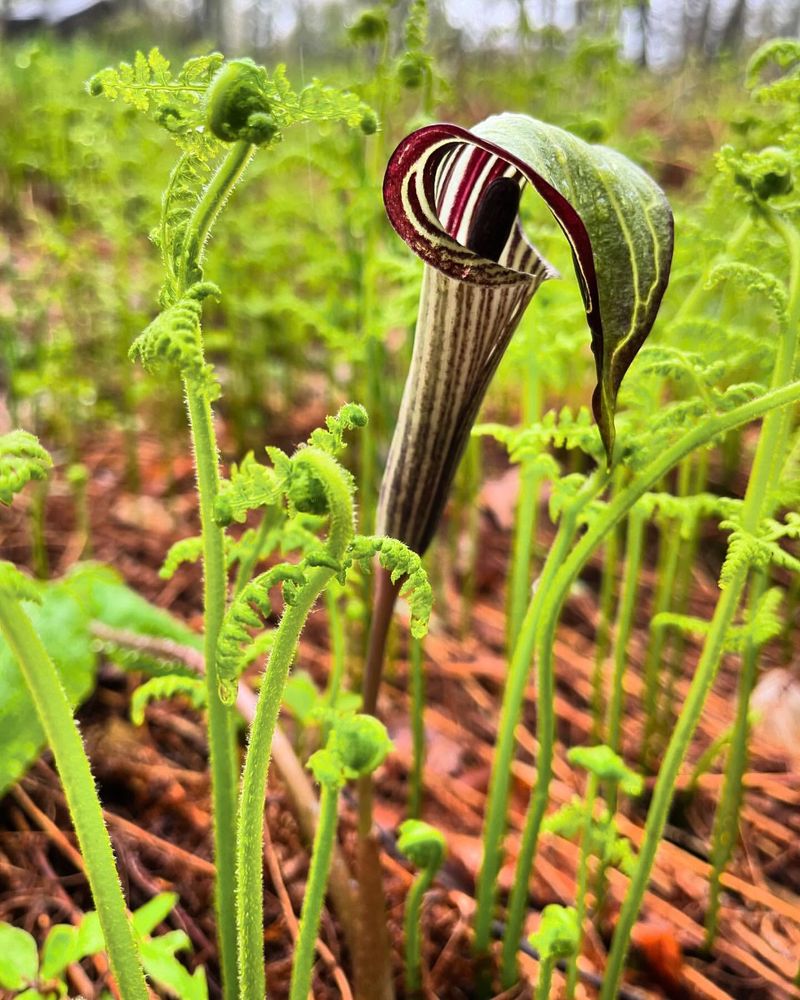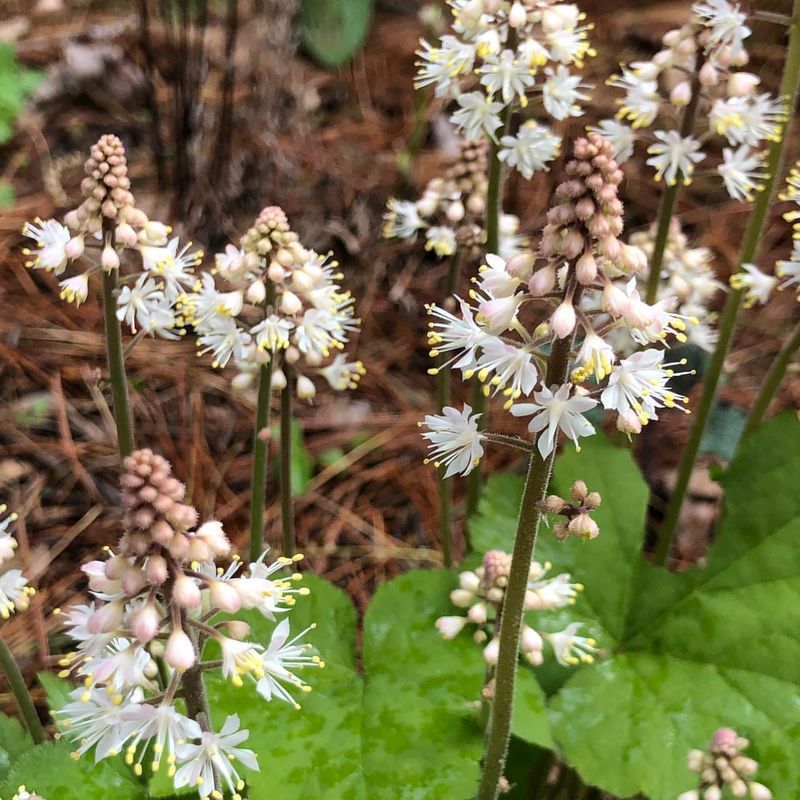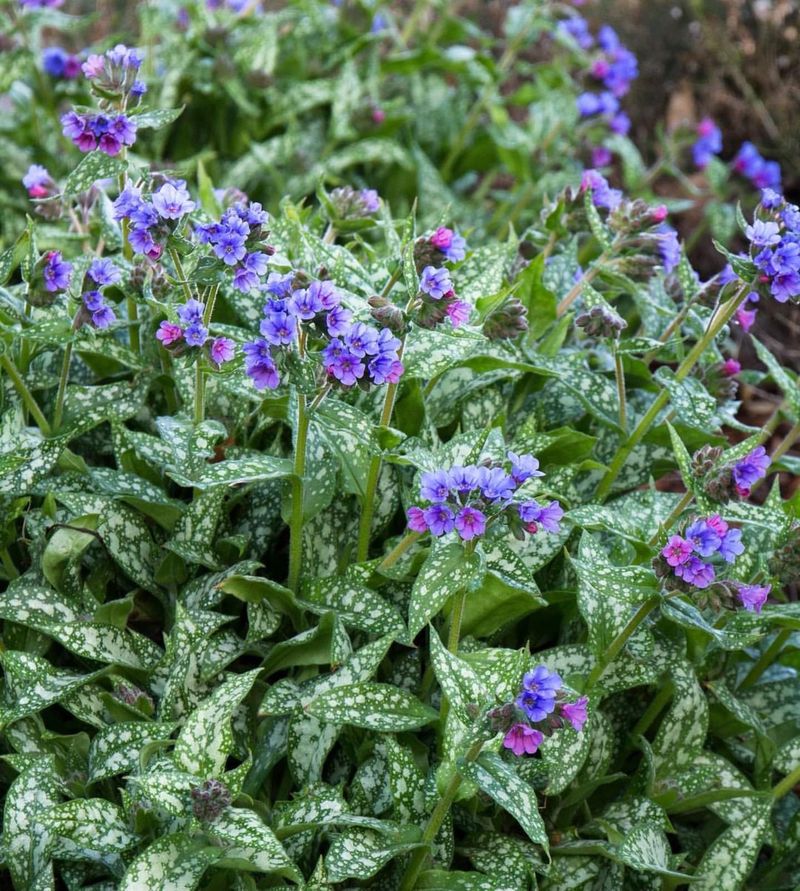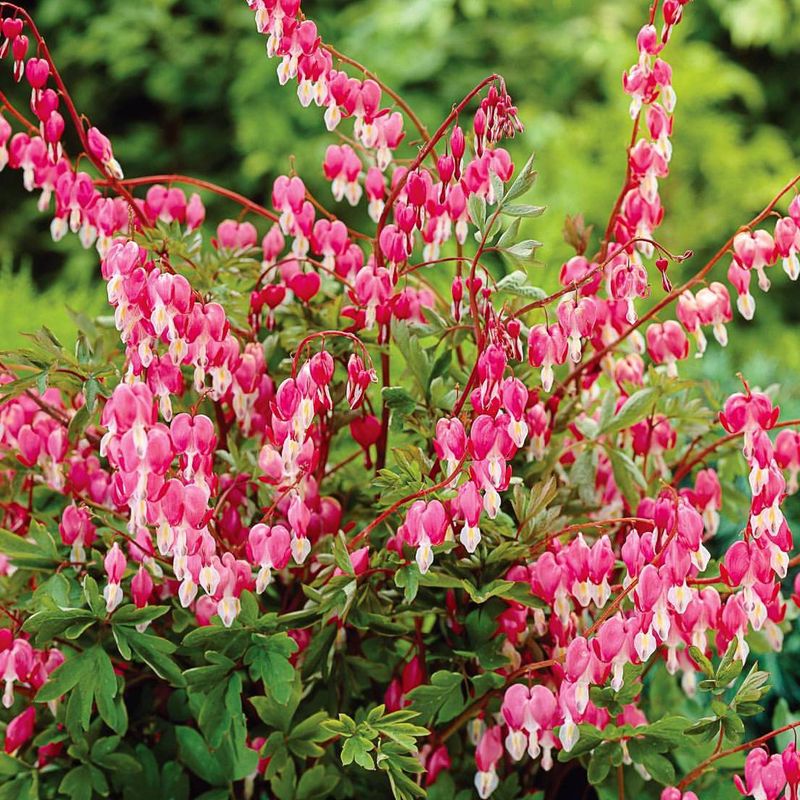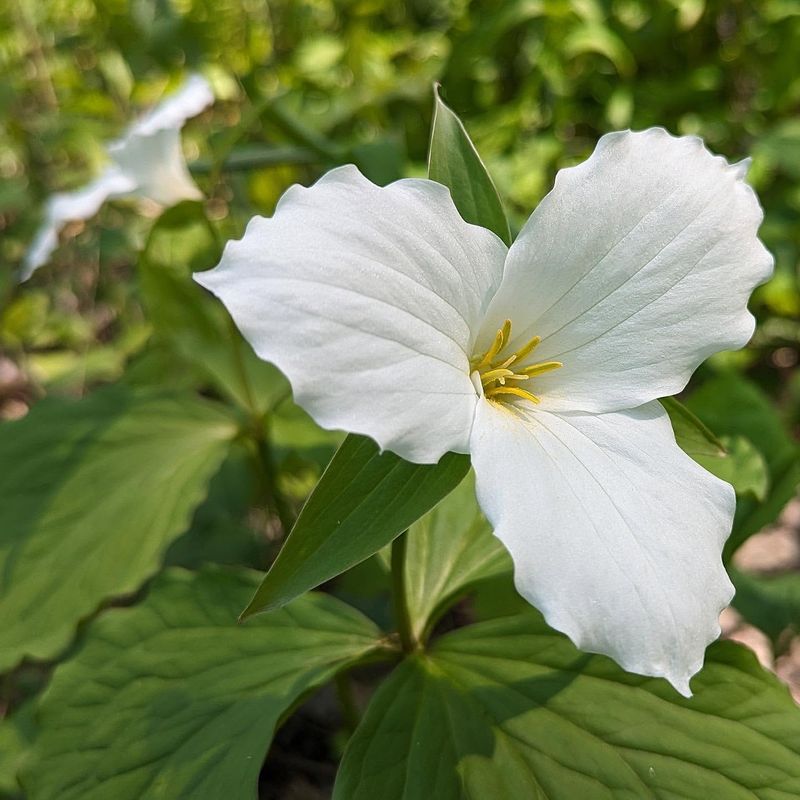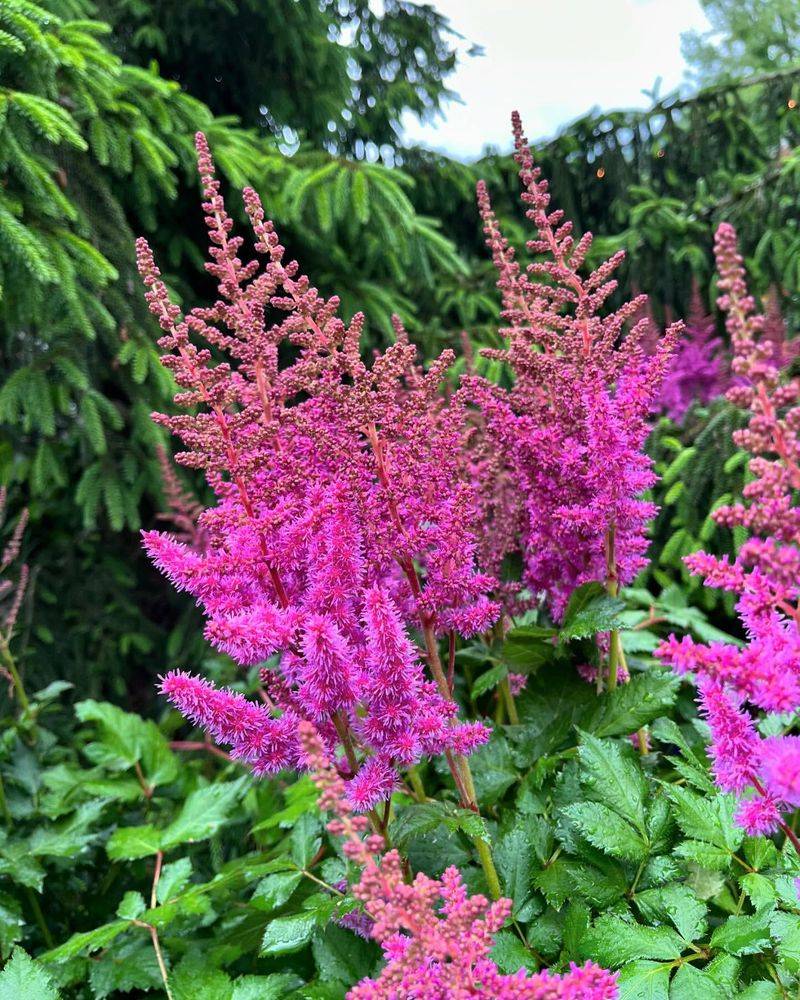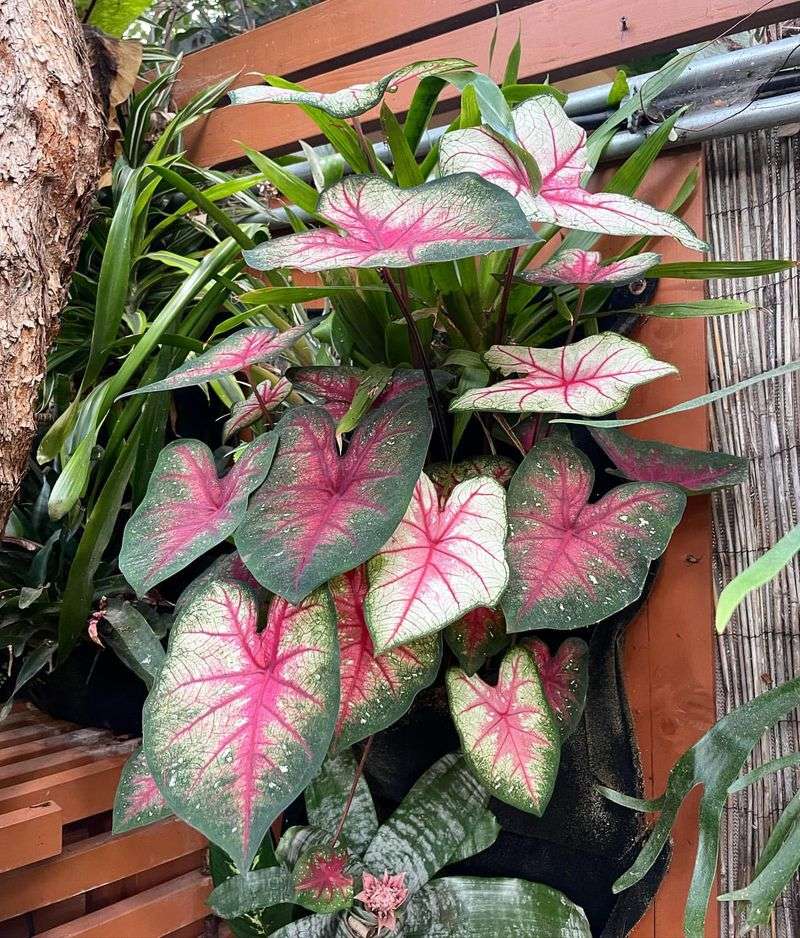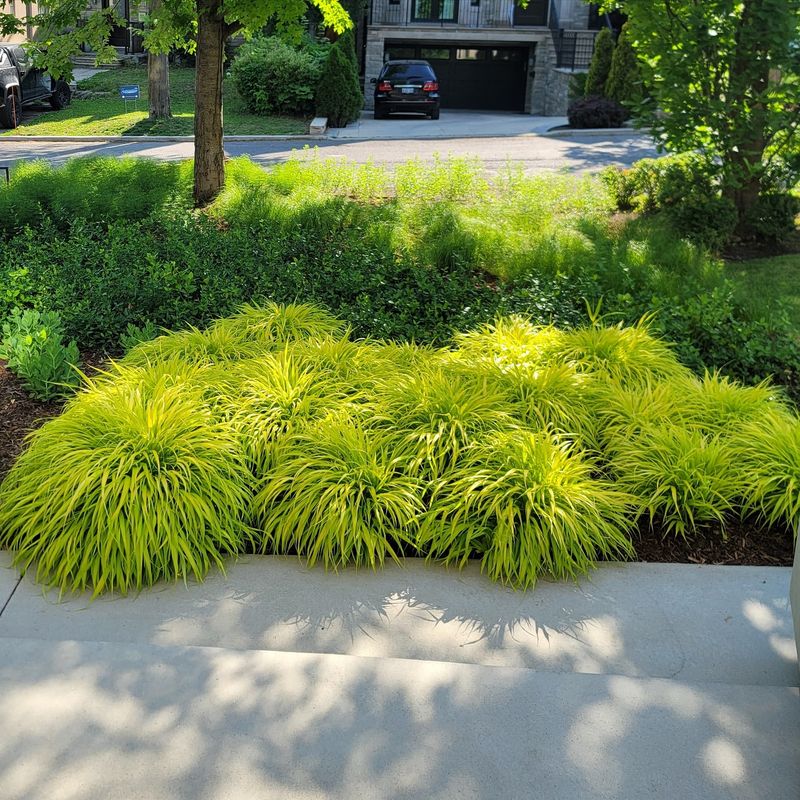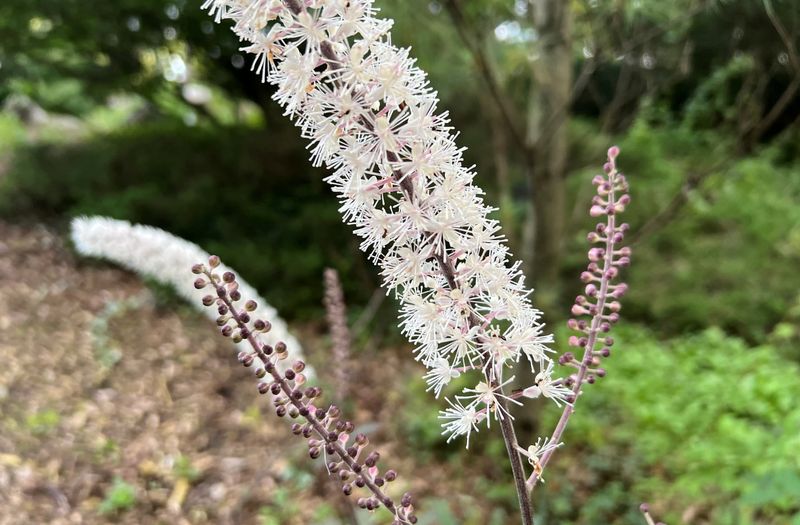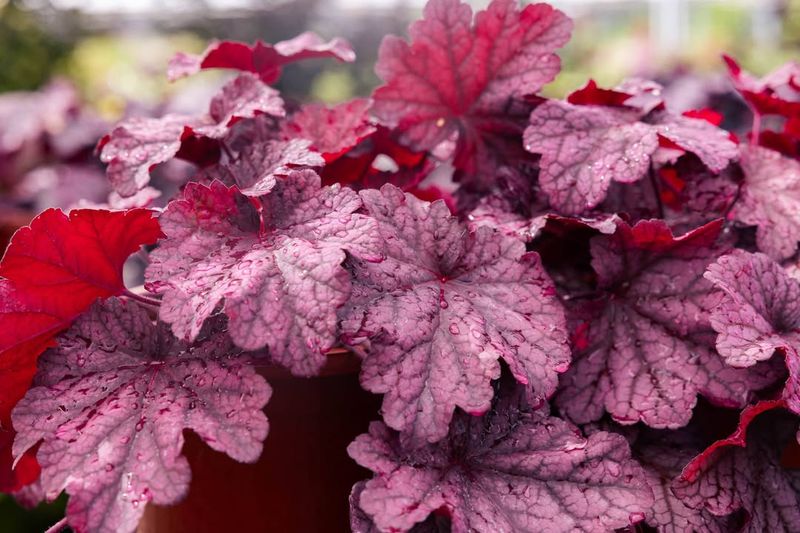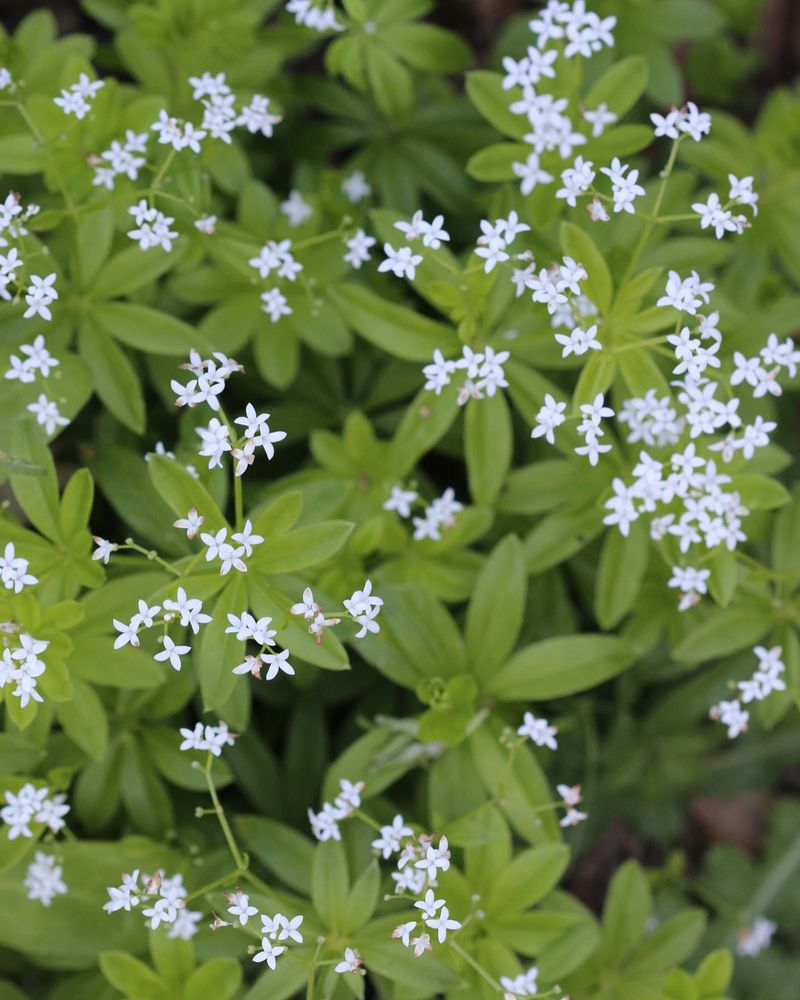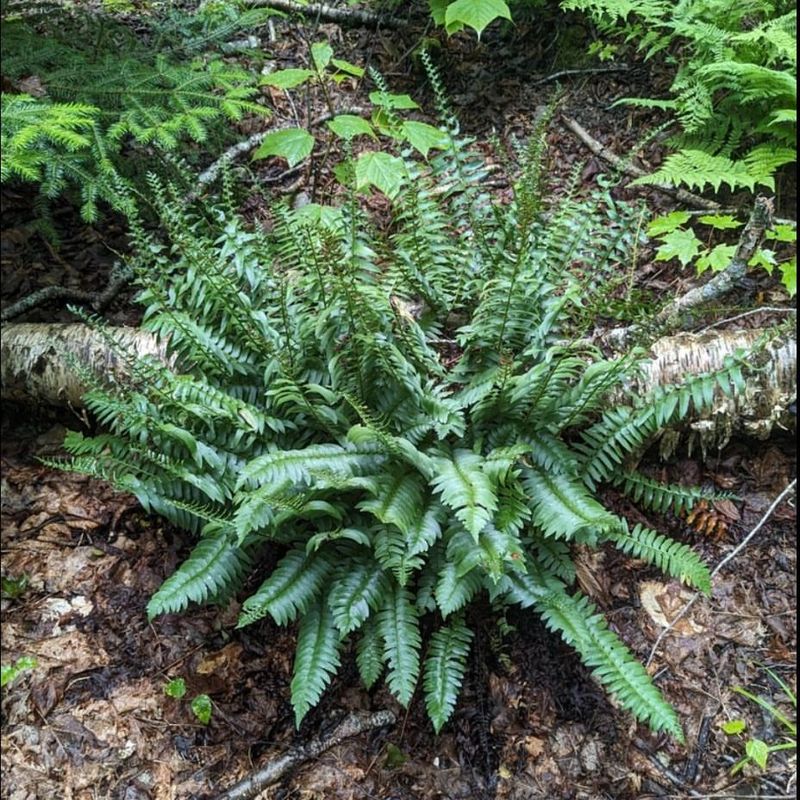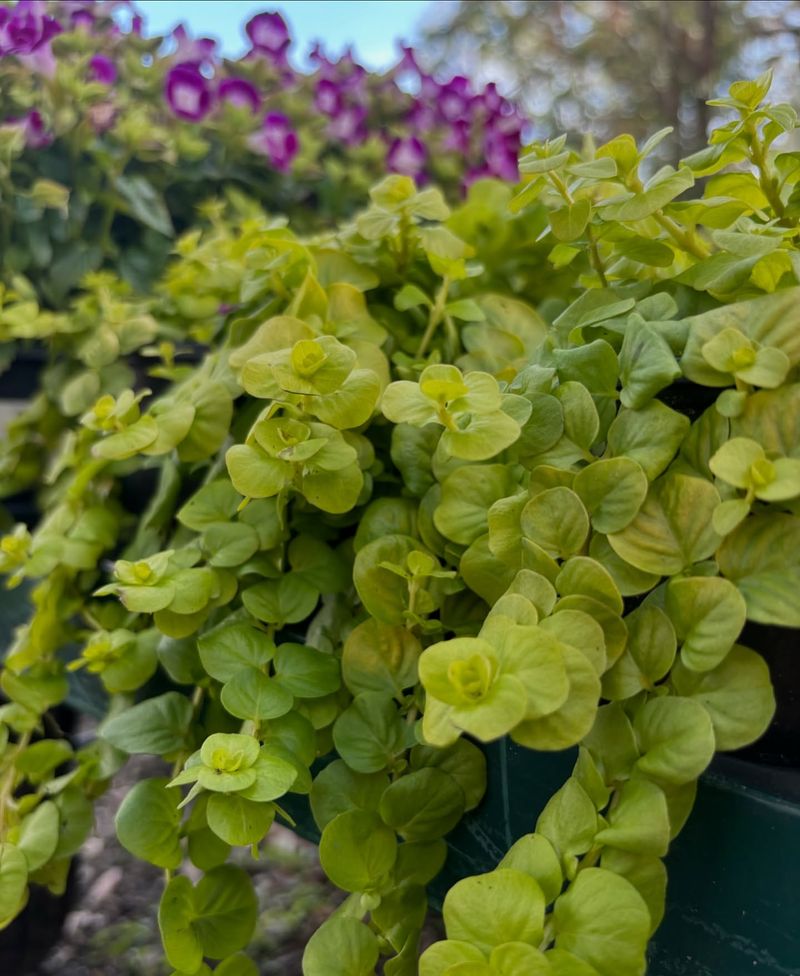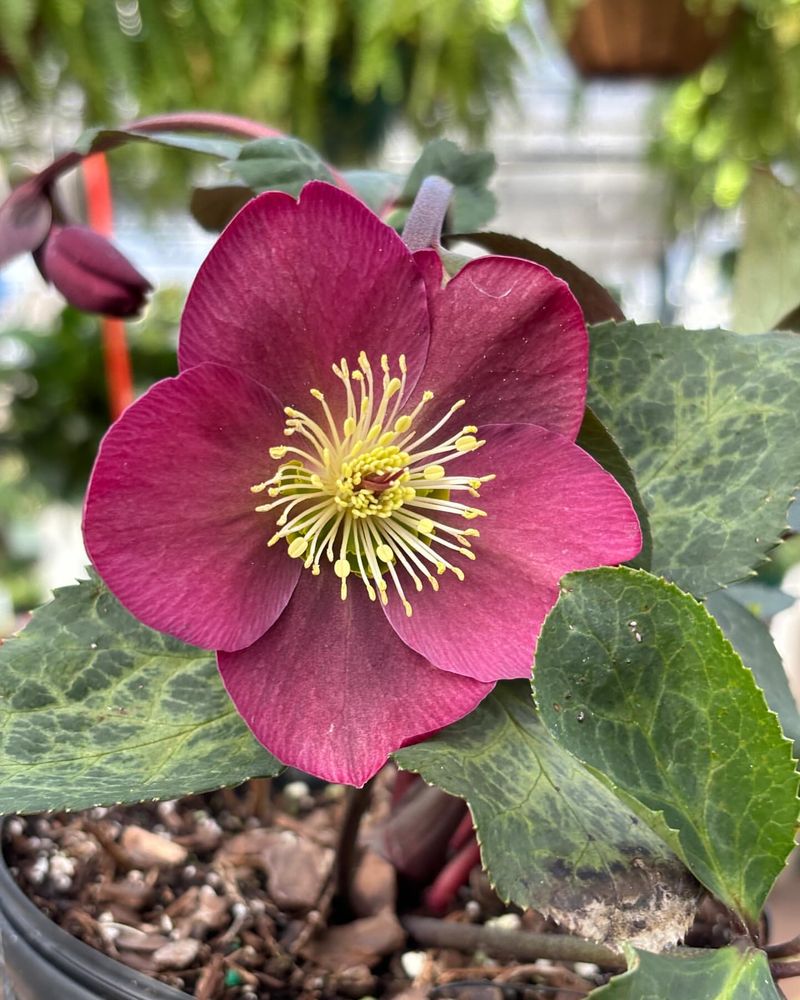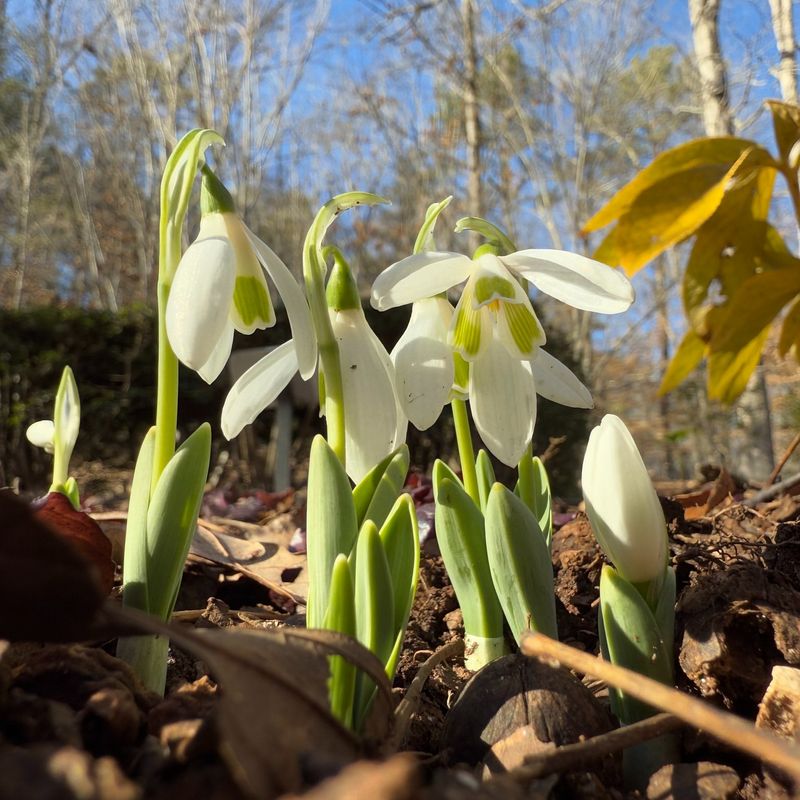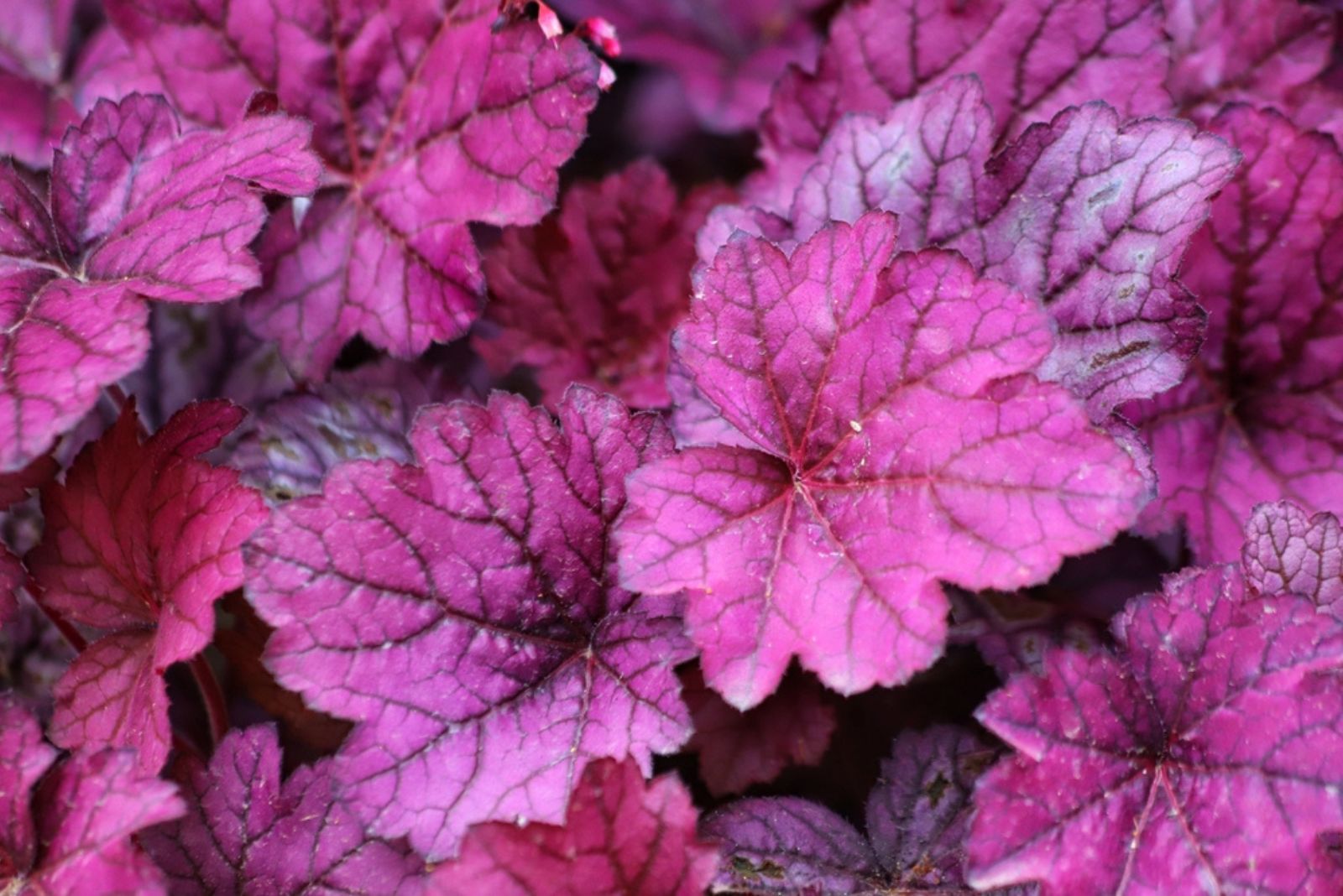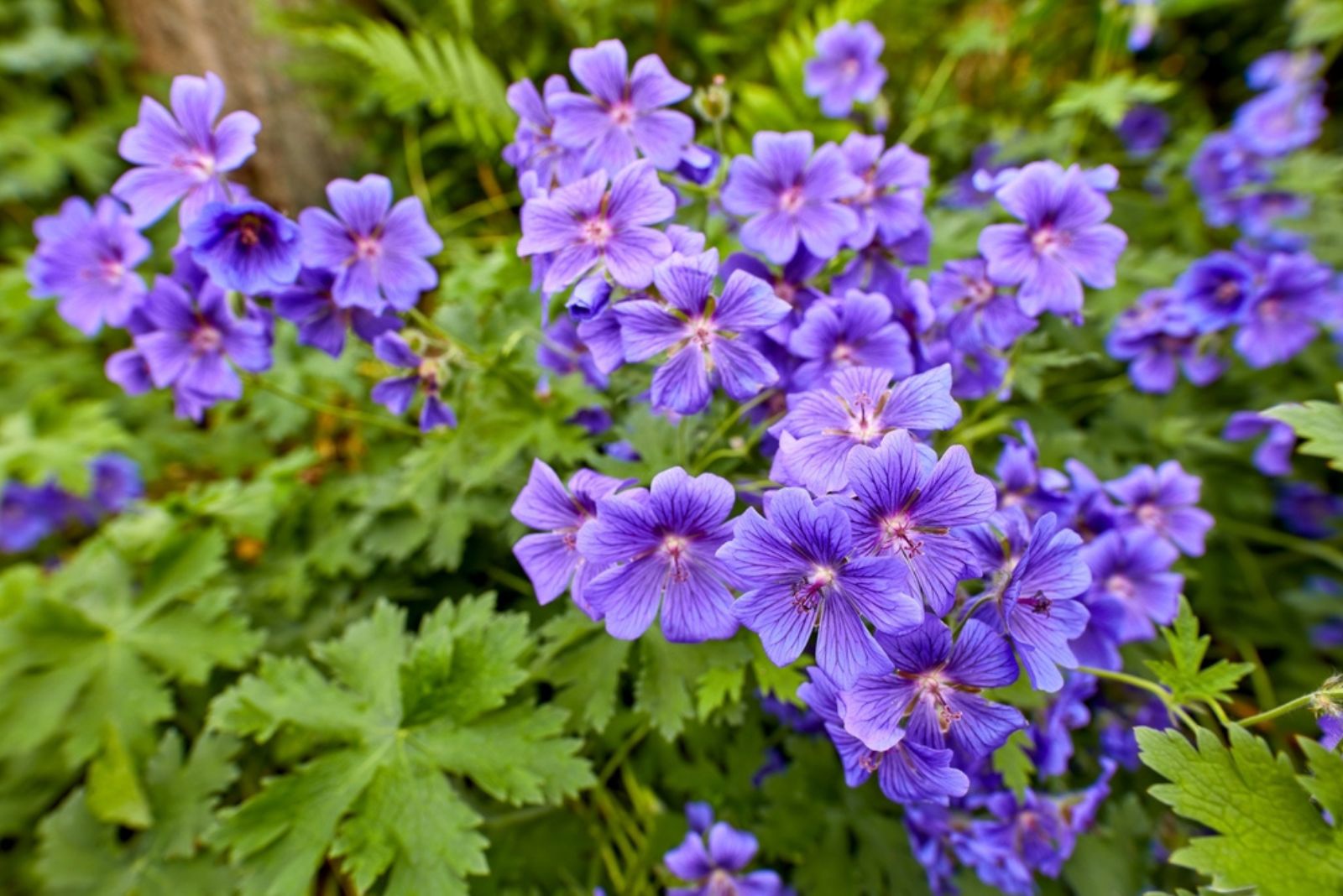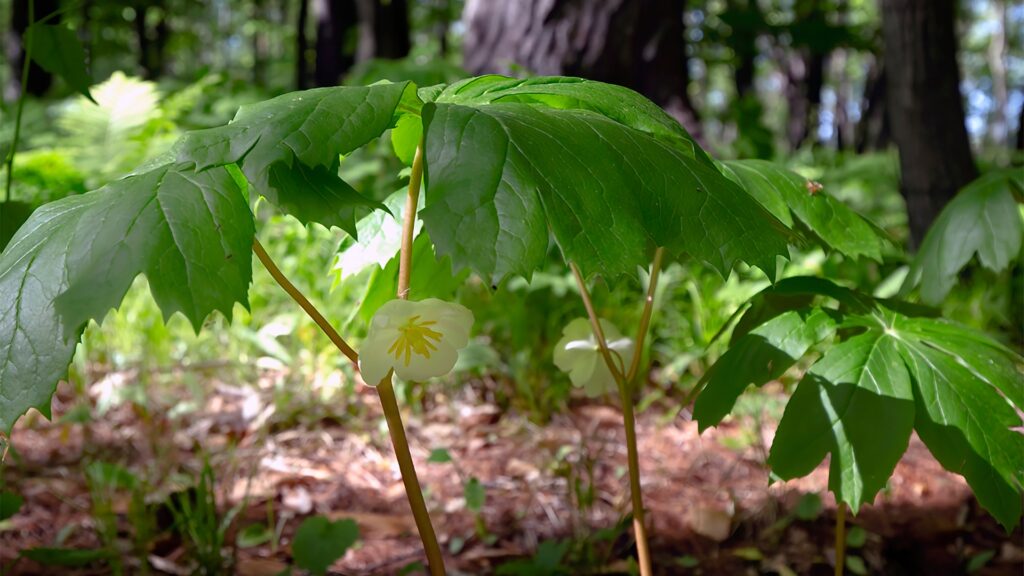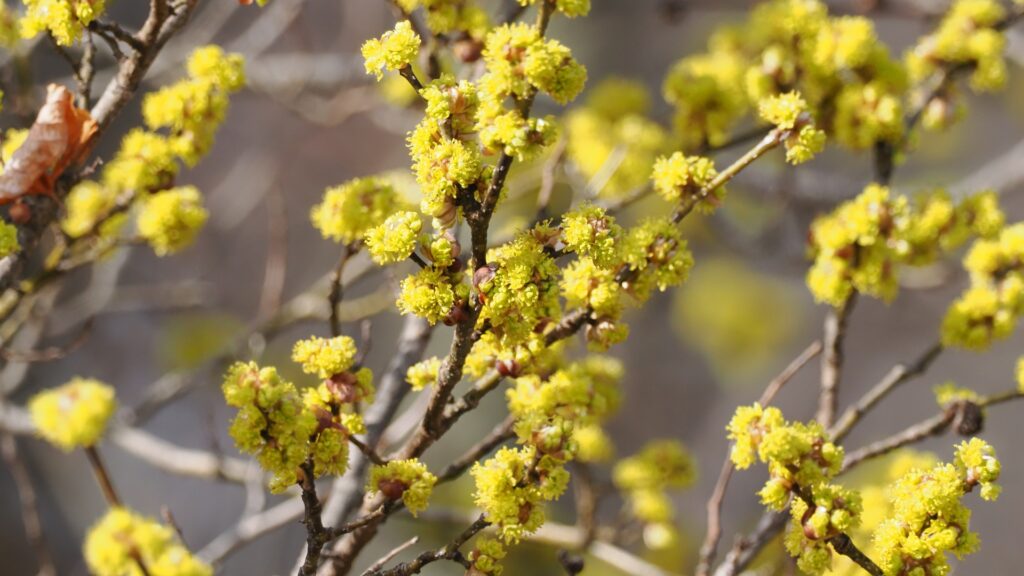Shade doesn’t have to cast a gloom over your garden—quite the opposite! While some plants chase the sun, others are perfectly content dancing in the shadows. These low-light lovers don’t just hang on—they thrive, turning dark corners into hidden gems.
I’ve gathered 24 native plants that prove you don’t need full sun to shine. So if you’ve got a forgotten nook or a gloomy patch crying out for attention, roll up your sleeves—because these shade superstars are ready to bring your garden out of the dark and into full bloom.
1. Hosta
Shadows whisper secrets to those who listen, and the Hosta is all ears. Known for its lush, abundant foliage, the Hosta enjoys a life out of the spotlight.
Its broad, textured leaves add a touch of elegance to any garden. For a thriving Hosta, plant in well-drained soil and keep it watered. While slugs may covet its leaves, a little vigilance and some organic slug deterrents will keep them at bay.
2. Ferns
Mysteries hide in the cool embrace of shaded woods, and the Fern is its herald. With its feathery fronds, Ferns evoke the primeval forests of ancient times.
They possess a timeless grace, perfect for filling those shadowy spots in your garden. To keep them thriving, ensure moist, rich soil and avoid direct sunlight. Ferns love humidity, so misting them occasionally can mimic their natural habitat.
3. Virginia Bluebells
Enchanting the forest floors, Virginia Bluebells are the belles of the ball in shady spaces. These charming perennials flaunt clusters of delicate, bell-shaped blue flowers.
Their soft hues add a gentle touch of color to the subdued corners of your garden. Plant them in moist, well-drained soil for best results.
As spring ephemerals, they prefer a quiet life, disappearing back into the ground post-bloom, so let them rest undisturbed.
4. Solomon’s Seal
Elegance finds its stride with Solomon’s Seal, a plant of quiet dignity. Its arching stems and dainty white flowers sway gently in the breeze.
This perennial creates a sophisticated backdrop for shade gardens. Plant in fertile, humus-rich soil and water regularly for lush growth. Come autumn, its leaves turn golden, offering a last hurrah before winter’s embrace.
5. Wild Ginger
Underfoot and often overlooked, Wild Ginger carpets the forest floor with grace. Its heart-shaped leaves form a beautiful tapestry in shaded gardens.
Though its flowers play hide and seek beneath the foliage, its charm is undeniable. Provide rich, moist soil and a sprinkle of love for it to flourish. This ground cover is a friend to woodland creatures, inviting them to partake in its hidden delights.
6. Jack-in-the-Pulpit
Nature’s intrigue is embodied in Jack-in-the-Pulpit, with its curious, hooded flowers. This mysterious plant boasts a unique structure that captivates onlookers.
Its charm is best appreciated in damp, shaded gardens. To grow this enigma, plant in moist, well-drained soil and let nature do the rest. Beware, however, as the plant’s berries are toxic, adding a hint of danger to its allure.
7. Foamflower
Whispers of foam dance with the breeze when Foamflower graces a garden. With its delicate white blooms, this ground cover paints a frothy spectacle.
Its heart-shaped leaves add texture and charm to shaded landscapes. Plant in moist, well-drained soil and provide dappled shade for optimal growth. Foamflower spreads gently, creating a lush, low-maintenance carpet.
8. Lungwort
Curiosities abound with Lungwort, a plant as whimsical as its name suggests. Bearing speckled leaves and clusters of pink and blue flowers, it’s a sight to behold.
In a shaded garden, it offers a colorful contrast to the green backdrop. For happy Lungwort, provide moist, rich soil and keep it out of direct sunlight. Its leaves are a favorite canvas for nature’s polka dots, adding a playful touch.
9. Bleeding Heart
Romance is in the air with the Bleeding Heart, a plant that wears its heart on its sleeve. Its arching stems adorned with heart-shaped pink flowers are pure poetry.
In the shade, it creates an enchanting focal point. Plant in rich, well-drained soil and water regularly for best results. Come summer, it may retreat into dormancy, so let it rest and dream until next spring.
10. Trillium
In the symphony of the woods, Trillium plays a graceful note. With three-petaled flowers, it stands as a symbol of woodland elegance.
In shade gardens, it adds a touch of wild beauty. For thriving Trillium, plant in humus-rich soil and provide plenty of moisture. As a slow-growing treasure, patience is key, but the rewards are bountiful.
11. Astilbe
Feathers of color arise with Astilbe, a plant that knows how to make an entrance. Its feathery plumes in shades of pink, red, and white are a garden’s delight.
In the shade, it transforms the landscape into a vibrant spectacle. To keep Astilbe thriving, plant in well-drained, moist soil and water regularly. Its blooms attract butterflies, adding an extra layer of charm.
12. Caladium
Colorful whispers beckon with Caladium, a plant that doesn’t shy away from making a statement. Its heart-shaped leaves, painted with hues of red, pink, and white, are a feast for the eyes.
In shaded areas, it adds a tropical flair that’s hard to miss. To grow Caladium successfully, plant in well-drained soil and ensure consistent moisture. While it’s showy, the plant appreciates a gentle hand, so handle with care.
13. Japanese Forest Grass
Graceful waves of green flow with Japanese Forest Grass, a plant that knows the art of subtlety. Its arching blades of gold and green create a serene, flowing landscape.
In the shade, it adds movement and texture to gardens. Plant in well-drained soil and provide consistent moisture for the best results. This grass dances in the breeze, bringing a sense of peace and elegance.
14. Bugbane
Tall and mysterious, Bugbane stands as a sentinel of the shaded garden. Its spiky white flowers rise above dark foliage, creating a striking silhouette.
In the dim light, it becomes an architectural feature. To grow Bugbane, plant in rich, moist soil and provide ample shade. Patience is rewarded with late-summer blooms that add drama to the scene.
15. Coral Bells
Vibrancy meets elegance with Coral Bells, a plant that knows how to dazzle. Its colorful foliage ranges from deep burgundy to bright lime, offering a palette for any garden.
In the shade, it complements other plants with its delicate flower stalks. For success, plant in well-drained soil and provide consistent moisture. Coral Bells appreciates a little pampering to keep its leaves vibrant.
16. Sweet Woodruff
Sweetness weaves through the shadows with Sweet Woodruff, a plant that perfumes the air. Its starry white flowers and lush foliage make it a charming ground cover.
In shaded areas, it creates a carpet of green that’s hard to resist. Plant in moist, well-drained soil and let it spread naturally. Its fragrance adds a delightful aroma to the shaded garden.
17. Christmas Fern
Evergreen fronds greet the winter with Christmas Fern, a plant that stands resilient. Its sturdy leaves provide a touch of life even in the coldest months.
In shaded woodland gardens, it adds year-round interest. Plant in well-drained soil and ensure regular watering for best growth. This fern is a reliable companion, asking little but giving much in return.
18. Creeping Jenny
Bright and cheerful, Creeping Jenny knows how to cover ground with style. Its vibrant green leaves sprawl across paths and stones, creating a lively carpet.
In the shade, it fills spaces with ease and grace. Plant in moist, well-drained soil and allow it to roam freely. This ground cover is as playful as its name suggests, adding a hint of whimsy.
19. Hellebore
Winter’s jewel, Hellebore, blooms when others dare not. Its nodding flowers in shades of pink and cream bring joy to the cold days.
In the shade, it offers a splash of color when most needed. Plant in well-drained, rich soil and water regularly for success. Hellebore is a quiet performer, thriving in the background of the winter garden.
20. Snowdrop
Hope peeks through the snow with Snowdrops, the harbingers of spring. Their delicate white blooms emerge like tiny lanterns illuminating the forest floor.
In shaded areas, they signal the end of winter’s grasp. Plant in well-drained soil and allow them to naturalize for best display. Snowdrops are a gentle reminder that warmth and light will return.
21. Heuchera
Low light? No problem. This frilly-leafed queen doesn’t just survive in shade—she thrives and brings a whole mood with her. Known as Heuchera, or Coral Bells if you’re feeling cute, this native perennial gives you ruffled foliage in every shade from lime green to deep burgundy.
Honestly, the leaves alone are a look, but she also throws up delicate flower spikes in late spring to early summer. Bees and hummingbirds are into it, and you don’t have to babysit her.
22. Wild Geranium
This one’s got pretty energy and personality. Wild Geranium is a native that actually likes the shade and shows up in early spring with soft pink-to-lavender flowers that keep blooming longer than expected.
The foliage is lightly lobed and stays fresh-looking even when other plants start to flop mid-season. It spreads gently without being chaotic, attracts pollinators, and works perfectly in woodland borders or tucked under taller shrubs.
23. Mayapple
A woodland wanderer with a whimsical charm, the Mayapple emerges like an umbrella popped open by spring’s first breeze. Its large, lobed leaves form a canopy above a single, hidden flower that later gives way to a small, golden fruit.
This native understory dweller prefers moist, well-drained soil and dappled shade. While the fruit is edible when ripe, the rest of the plant is toxic—so admire with care. Mayapple brings a fairytale touch to shaded gardens and naturalized paths.
24. Spicebush
Aromatic and unassuming, Spicebush offers subtle elegance beneath the trees. This deciduous shrub surprises in early spring with tiny yellow blossoms before its bright green leaves unfurl. Come fall, its red berries are a favorite snack for birds.
Thriving in moist, well-drained soil and partial to full shade, it’s a great pick for woodland edges or shady hedgerows. Brush against its leaves or snap a twig, and you’ll catch its namesake spicy scent—a sensory gift from nature.

